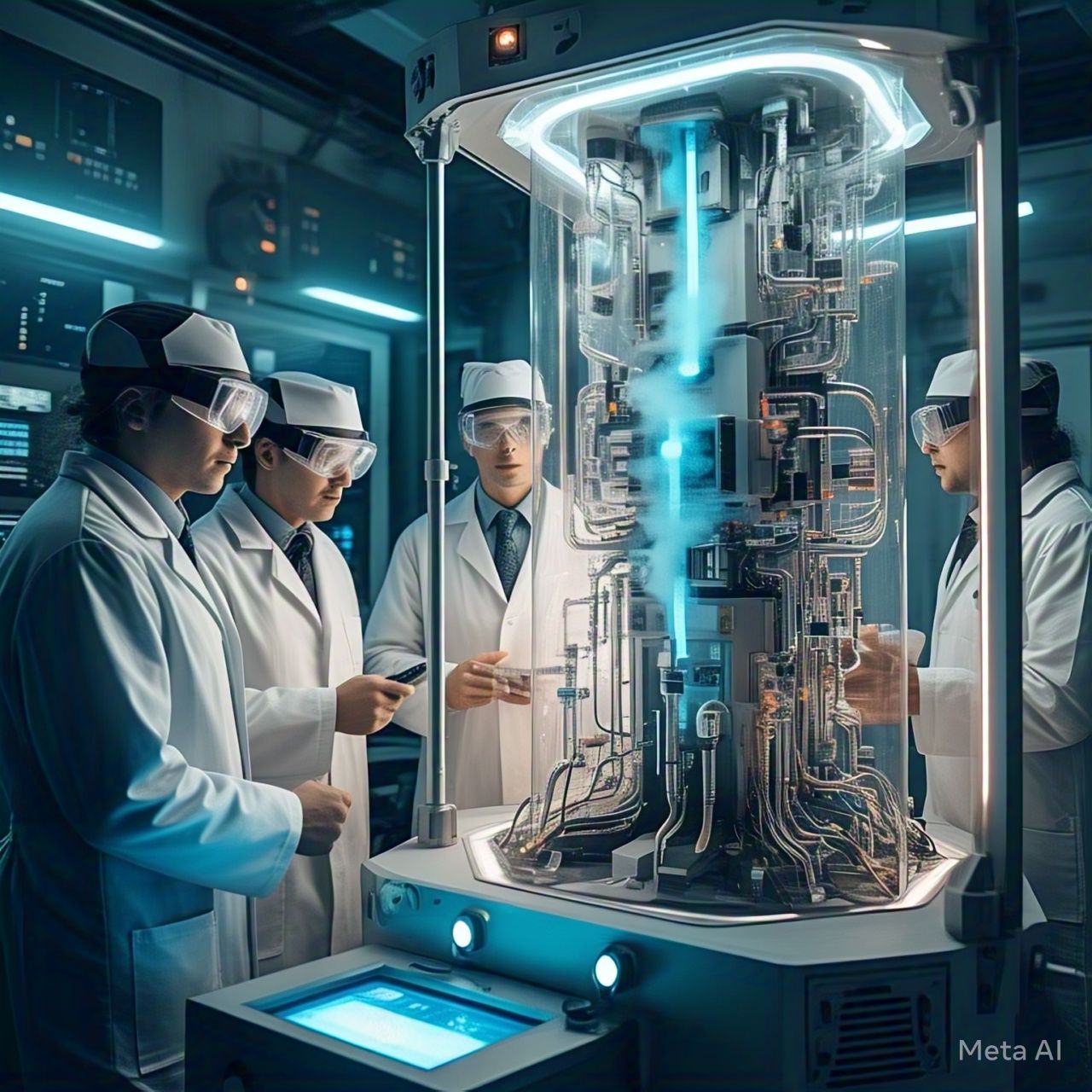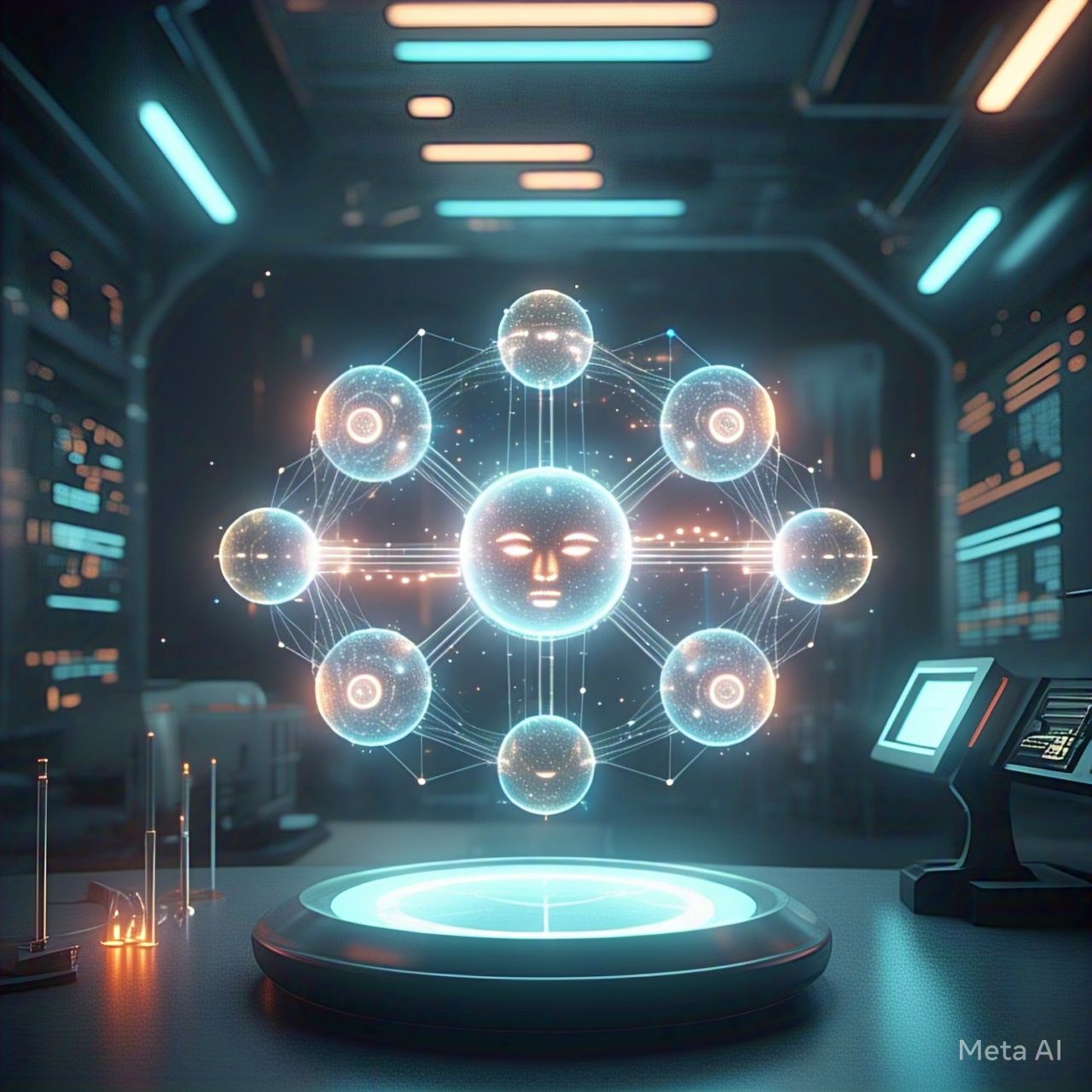Table of Contents
- Introduction
- The Growing Demands of AI Processing
- What is Cryogenic Computing?
- How Cryogenic Computing Enhances AI Performance
- The Role of Superconductors in Cryogenic AI
- Comparison: Traditional vs. Cryogenic AI Computing
- Real-World Applications of Cryogenic AI Computing
- Challenges in Implementing Cryogenic Computing for AI
- Future Prospects: Advancing AI with Cryogenic Technology
- Conclusion
- FAQs
1. Introduction
Artificial Intelligence (AI) is advancing at an unprecedented pace, but this progress comes at a significant computational and energy cost. As AI models become more complex, traditional semiconductor-based computing systems are struggling to keep up with performance and efficiency demands.
Cryogenic computing—a revolutionary approach that operates at extremely low temperatures—has emerged as a game-changer for AI acceleration. This technology leverages superconductors to dramatically reduce energy consumption and boost processing speed, making it a hidden weapon for the next generation of AI.
2. The Growing Demands of AI Processing
2.1 Increased AI Model Complexity
Modern AI models like GPT-4, DeepMind’s AlphaFold, and OpenAI’s DALL·E require massive computational resources, pushing current hardware to its limits.
2.2 Power-Hungry Data Centers
AI data centers already consume over 200 terawatt-hours (TWh) per year, equivalent to the energy use of entire countries. This demand is unsustainable without innovative energy-efficient solutions.
2.3 Need for Faster AI Inference and Training
AI applications, from real-time language translation to autonomous driving, require ultra-fast data processing, which traditional silicon-based chips struggle to deliver.
3. What is Cryogenic Computing?
Cryogenic computing refers to computational processes that operate at extremely low temperatures, typically below -180°C (-292°F). At these temperatures, superconducting materials exhibit zero electrical resistance, enabling ultra-efficient processing.
Key Elements of Cryogenic Computing:
- Superconductors – Materials that exhibit zero electrical resistance, allowing for faster data transfer with minimal energy loss.
- Josephson Junctions – High-speed, ultra-low-power switching components used in superconducting processors.
- Cryogenic Cooling Systems – Specialized cooling mechanisms that maintain near-absolute zero temperatures for optimal performance.
4. How Cryogenic Computing Enhances AI Performance
4.1 Near-Zero Energy Loss
Superconductors eliminate resistive power loss, reducing AI’s energy footprint significantly.
4.2 Unprecedented Processing Speed
Cryogenic computing enables AI processors to operate 100x faster than traditional chips, leading to lightning-fast training and inference times.
4.3 Minimal Heat Generation
Unlike silicon chips, cryogenic processors produce almost no heat, reducing the need for energy-intensive cooling systems in AI data centers.
4.4 Scalability for Next-Gen AI
As AI models continue to scale, cryogenic technology allows for greater computational density while maintaining efficiency.
5. The Role of Superconductors in Cryogenic AI
Superconductors are the backbone of cryogenic AI computing, providing high-speed, energy-efficient processing through quantum effects.
Superconducting AI Processors:
- IBM’s Cryogenic AI Chips – IBM is pioneering superconducting AI chips capable of processing data 10x faster than traditional processors.
- MIT’s AI-Powered Superconductors – Researchers are developing AI accelerators that leverage Josephson junctions for extreme efficiency.
- Google’s Quantum AI Lab – Google is integrating superconducting technologies into AI-driven quantum computing.
6. Comparison: Traditional vs. Cryogenic AI Computing
| Feature | Traditional AI Chips | Cryogenic AI Chips |
|---|---|---|
| Energy Efficiency | Moderate | Ultra-efficient |
| Processing Speed | Slower | 100x Faster |
| Heat Generation | High | Minimal |
| AI Training Time | Long | Significantly Reduced |
| Scalability | Limited | High |
7. Real-World Applications of Cryogenic AI Computing
7.1 AI-Driven Scientific Simulations
Cryogenic processors can accelerate complex simulations in fields like physics, chemistry, and biology.
7.2 Autonomous Vehicles
AI-powered self-driving systems require real-time inference that cryogenic computing can significantly enhance.
7.3 Large-Scale AI Cloud Computing
Tech giants like Google, Microsoft, and Amazon are exploring cryogenic AI processors to reduce cloud computing power costs.
7.4 Quantum AI Integration
Cryogenic superconductors bridge the gap between traditional AI and quantum computing, unlocking new possibilities for AI innovation.
7.5 Space Exploration and Defense
NASA and defense organizations are researching cryogenic AI for satellite AI systems and high-speed military computing.
8. Challenges in Implementing Cryogenic Computing for AI
8.1 High Development Costs
Cryogenic systems require specialized manufacturing and complex cooling technologies, making initial adoption costly.
8.2 Cooling Infrastructure
Maintaining ultra-low temperatures requires advanced helium-based cooling, which can be challenging to implement at scale.
8.3 Limited Commercial Availability
Most cryogenic computing technologies are still in experimental or research phases, delaying widespread adoption.
8.4 Integration with Existing AI Frameworks
AI software and frameworks must be adapted to fully leverage the power of cryogenic AI chips.
9. Future Prospects: Advancing AI with Cryogenic Technology
9.1 Development of High-Temperature Superconductors
Scientists are working on room-temperature superconductors, which could eliminate cooling challenges.
9.2 AI-Hardware Co-Design Innovations
New AI models designed specifically for cryogenic processors could unlock even greater efficiencies.
9.3 Increased Industry Investment
Tech companies are heavily investing in cryogenic AI research, bringing commercial deployment closer.
9.4 Sustainable AI Revolution
By reducing energy consumption and emissions, cryogenic computing could drive the next wave of sustainable AI innovation.
10. Conclusion
Cryogenic computing is poised to redefine the future of AI by addressing critical challenges of energy efficiency, processing speed, and scalability. With its ability to reduce power consumption while boosting computational performance, it stands as a hidden yet powerful weapon for AI’s next generation.
Although challenges remain, continuous advancements in superconducting materials and cooling technologies are paving the way for mainstream adoption. As AI continues to evolve, the integration of cryogenic computing will be essential for sustaining AI’s exponential growth.
11. FAQs
1. What is cryogenic computing?
Cryogenic computing involves computational processes that operate at extremely low temperatures, enabling ultra-efficient data processing using superconductors.
2. How does cryogenic computing improve AI performance?
By eliminating resistive power loss, reducing heat generation, and enabling faster processing speeds, cryogenic computing significantly enhances AI efficiency.
3. Are cryogenic AI chips commercially available?
Currently, they are in research and experimental phases, but tech giants are actively investing in commercial development.
4. What industries benefit the most from cryogenic AI?
Industries such as scientific research, autonomous vehicles, cloud computing, and quantum AI stand to gain the most.
5. What are the main barriers to cryogenic AI adoption?
Challenges include high development costs, cooling infrastructure, and integration with existing AI frameworks.




